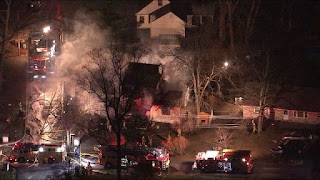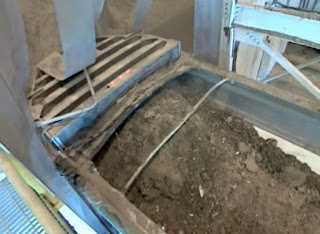SCHWENKSVILLE, PA-
Authorities (the fire marshal) have identified a cause for the deadly fire that took the life of two young boys Wednesday.
According to reports, the Pennsylvania State Police fire marshal has ruled the fire accidental. Authorities say the fire was the result of an electrical failure of an extension cord that was plugged in to a space heater on the porch.
The fire broke out around 5:30 a.m. on Wednesday on the 900 block of Summit Avenue. Montgomery County Deputy Sheriff Bryan Lukens; his wife, Tracy; and their daughter, Soffia, were able to safely escape the fire. Lukens’ sons Bryan Jr., 11, and Parker, 6, were found dead inside the home.
Tracy and Soffia Lukens were both treated at Pottstown Hospital and released Wednesday. Deputy Bryan Lukens was being treated in the burn unit of Lehigh Valley Hospital, according to the Sheriff’s department.
=====================
According to reports, the Pennsylvania State Police fire marshal has ruled the fire accidental. Authorities say the fire was the result of an electrical failure of an extension cord that was plugged in to a space heater on the porch.
The fire broke out around 5:30 a.m. on Wednesday on the 900 block of Summit Avenue. Montgomery County Deputy Sheriff Bryan Lukens; his wife, Tracy; and their daughter, Soffia, were able to safely escape the fire. Lukens’ sons Bryan Jr., 11, and Parker, 6, were found dead inside the home.
Tracy and Soffia Lukens were both treated at Pottstown Hospital and released Wednesday. Deputy Bryan Lukens was being treated in the burn unit of Lehigh Valley Hospital, according to the Sheriff’s department.
=====================
Cause named in Schwenksville fire that claimed lives of the 2 Lukens boys
Thursday, December 14, 2017
SCHWENKSVILLE, Pa. (WPVI) -- Authorities have identified the cause of a devastating house fire that claimed the lives of two sons of a Montgomery County sheriff's deputy.
Pennsylvania State Police Fire Marshal has ruled the fire accidental in nature, attributing the cause to an electrical failure of an extension cord plugged into a space heater on the porch of the home.
The fire erupted around 5:30 a.m. Wednesday at a home in the 900 block of Summit Avenue in Schwenksville, Pa.
Authorities say 11-year-old Bryan Lukens Jr. and 6-year-old Parker Lukens were found dead inside the home once the flames were extinguished.
Dep. Bryan Lukens was being treated at the burn unit at Lehigh Valley Hospital. His wife, Tracy, and 9-year-old daughter Soffia were treated for their injuries Pottstown Hospital and released, the sheriff's department said.
"Our office is devastated to learn about this tragedy," said Montgomery County Sheriff Sean P. Kilkenny said in a statement. "Our thoughts and prayers are with the Lukens family as they grieve their losses."
The blaze was placed under control shortly after fire crews arrived, police say.
By Wednesday night, crews were boarding up a home that was once filled with an active family.
"Very energetic, always doing something, always at the basketballs courts and everything, boys were always out playing," said neighbor Lisa Dull.
Those who know the family are stunned by this tragedy.
"I can't imagine losing one child, let alone two and knowing you did everything you could to save them," said family friend Kyle Boelter. "I don't know how they move on. We as a community have to rally around them."
Bryan Jr. and Parker were students at Schwenksville Elementary School. In a statement, the Perkiomen Valley School District said support for students and their families will be ongoing as needed. The district has said counselors will be on hand at the school Thursday.
"We invite all to join us in sending their thoughts and sympathies to the family at this very difficult time," the district said in a statement.
A makeshift memorial began to grow Wednesday night outside of a security fence placed around the property.
"I just can't believe it," said family friend Mary McGill. "It's worse than I thought."
===========================
SCHWENKSVILLE, Pa. (WPVI) --
Two sons of a Montgomery County sheriff's deputy were killed in a house fire on Wednesday morning.
The fire erupted around 5:30 a.m. at a home in the 900 block of Summit Avenue in Schwenksville, Pa.
Authorities say 11-year-old Bryan Lukens Jr. and 4-year-old Parker Lukens were found dead inside the home once the flames were extinguished.
Dep. Bryan Lukens was being treated at the burn unit at Lehigh Valley Hospital. His wife, Tracy, and 9-year-old daughter Soffia were treated for their injuries Pottstown Hospital and released, the sheriff's department said.
The blaze was placed under control shortly after fire crews arrived, police say.
Fire marshals are working to determine a cause of the fire.




















































